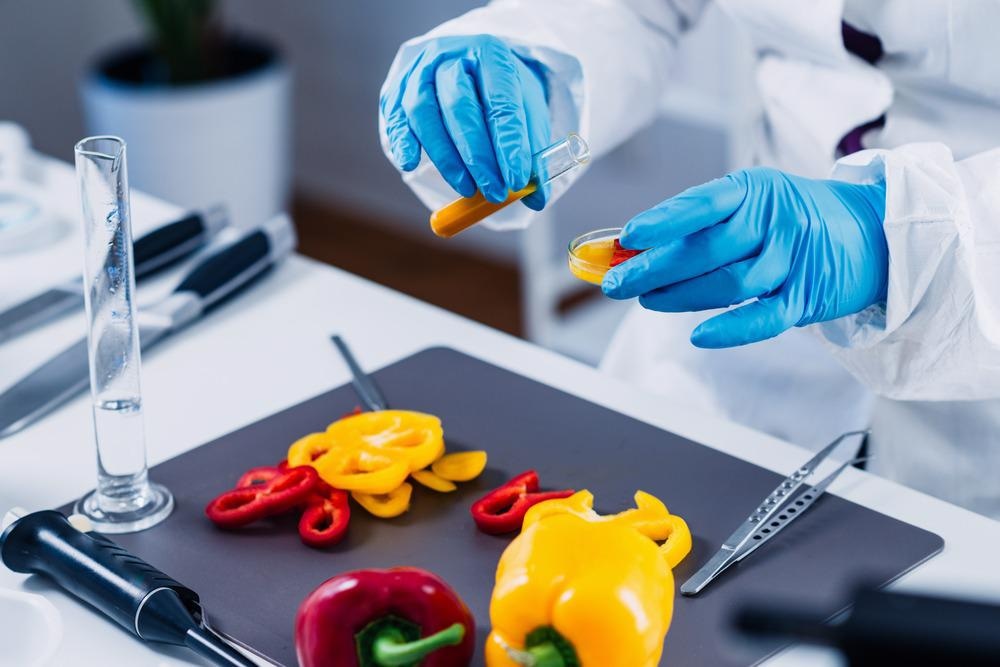Microscopy advancements improve food quality control by enhancing analytical capabilities and expanding the sample size.

Image Credit: Microgen/Shutterstock.com
Food Quality Control
The food sector relies heavily on food quality control management at every production level, from sourcing raw ingredients to delivering completed items. Consumer satisfaction, brand image, and financial performance are all directly impacted by quality control. Consequently, identifying and fixing quality issues can lead to better products, an improved brand reputation, and a larger consumer base.
What Happens if Food Quality is Not Controlled
When food quality is not monitored, it may deteriorate. The deterioration of food products by foreign materials has been a continuing issue for many decades.
Even though the food sector is vigilant in preventing deterioration, events still happen, resulting in massive recalls and consumer illness.
Food deterioration
Food deterioration is an unpleasant change or deviation from the natural state of the food. It is caused by microbes and significantly impacts food quality during storage and delivery. Foodborne microbes and pathogens can cause a range of illnesses and intoxications.
Traditional Food Preservation Methods
Drying
Drying is the oldest food preservation method. This approach limits the amount of water in food, preventing bacterial growth. Drying reduces the weight of food products, making them easier to transport. This procedure is used to preserve meat and fruits such as apples, apricots, and grapes.
Pickling and salting
In pickling, food is preserved with the help of brine (salt solution) or vinegar which inhibits the growth of bacteria. Meat is often stored after salting it, which removes the moisture, preventing bacterial growth.
Canning and bottling
Sterile cans and bottles are frequently used to store cooked food. The cans and bottles are boiled, killing the bacteria before storing food. Stored food is safe and healthy as long as the can or bottle is not opened.
Boiling and refrigerating
Boiling and refrigerating are the most common food preservation methods. Around 70% of microbial development is prevented by boiling and refrigerating. Microorganisms that cannot withstand high temperatures are killed by boiling, e.g. pasteurization.
In refrigeration, containers are kept at extremely low temperatures. Since microorganisms are not provided with the optimal temperature for growth, their growth is restricted.
Role of Microscopy in Food Quality Control
Microscopy in food quality control helps identify constituents in cooked foods, additives, and undesirable substances such as toxins or bacteria. The breakdown and preservation of food are also investigated through microscopy.
Scanning electron microscopes (SEM) that can regulate pressure and moisture levels within the sample chamber are ideal for studying food systems because most foods include water and fat.
Low magnification stereo microscopes are used to investigate foreign particles in food. This method also detects extraneous particles that may have gotten into the food during production.
Advancements in thermal microscopy in food quality control now allow for analyzing a considerably larger spectrum of components, notably starch grains. Thermal microscopy can give food scientists valuable information on keeping starch grains intact in different environments.
Bacteria can be found using a fluorescence microscope and stained materials. Staphylococcus aureus, Salmonella, E. coli, Shigella, and Campylobacter, are just a few bacteria commonly studied and observed using gram staining techniques.
Microscopy in Food Packaging
Microscopy methods are helpful not just for food analysis but also for food packaging. Quality-control teams can use microscopy to evaluate corrosion, leakage, and the characteristics of multi-layered films.
The capacity to assess multi-layered plastics while subjecting them to various environmental conditions has become a critical packaging component in food quality control. SEM analysis gives crucial information regarding changes in the packaging's microscopic qualities and particles that may alter those properties.
Atomic Force Microscopy in Food Preservation Methods
Atomic force microscopy (AFM), a strong scanning probe microscope, has been frequently used in food quality control and preservation research. With this technique, food products can be examined without harming them.
Photographs of polymers, surface structure, and the physical characteristics and adhesion of single molecules can all be seen in high resolution. Using AFM, researchers have gathered detailed data on preservation by assessing the degree of food deterioration and the resulting structural changes.
The primary mechanisms that lead to food quality degradation and the development of food preservation methods can be better explained using AFM imaging and force measurement. It can also investigate the role of enzymes and bacteria in affecting the quality of food goods while they are in storage. AFM's diverse functionalities and high-throughput results make it ideal for tackling spoiling issues.
Future Outlooks
Food safety is becoming increasingly important as people have become more conscious of maintaining a healthy diet. Due to enzymes and microbiological activity, a significant percentage of food spoils during processing and storage, resulting in significant economic losses for both consumers and producers.
Traditional food preservation methods have limitations, and the consumers' safety and the well-being of the food supply chain can both be enhanced by implementing innovative quality control methods in the food manufacturing industry.
References and Further Readings
Clelia, A. (2017). Food Spoilage and Food Safety: Is There a Link? In The Microbiological Quality of Food (pp. 283-300). Woodhead Publishing. https://doi.org/10.1016/B978-0-08-100502-6.00015-7
Zhao, L., Kristi, N., & Ye, Z. (2021). Atomic force microscopy in food preservation research: New insights to overcome spoilage issues. Food Research International, 140, 110043. https://doi.org/10.1016/j.foodres.2020.110043
Paiva, C. L. (2013). Quality Management: Important Aspects for the Food Industry. In (Ed.), Food Industry. IntechOpen. https://www.intechopen.com/chapters/41652
Niemeyer, W. D. (2015). SEM/EDS analysis for problem solving in the food industry. In Scanning Microscopies 2015 (Vol. 9636, pp. 52-60). SPIE. https://doi.org/10.1117/12.2196962
Disclaimer: The views expressed here are those of the author expressed in their private capacity and do not necessarily represent the views of AZoM.com Limited T/A AZoNetwork the owner and operator of this website. This disclaimer forms part of the Terms and conditions of use of this website.